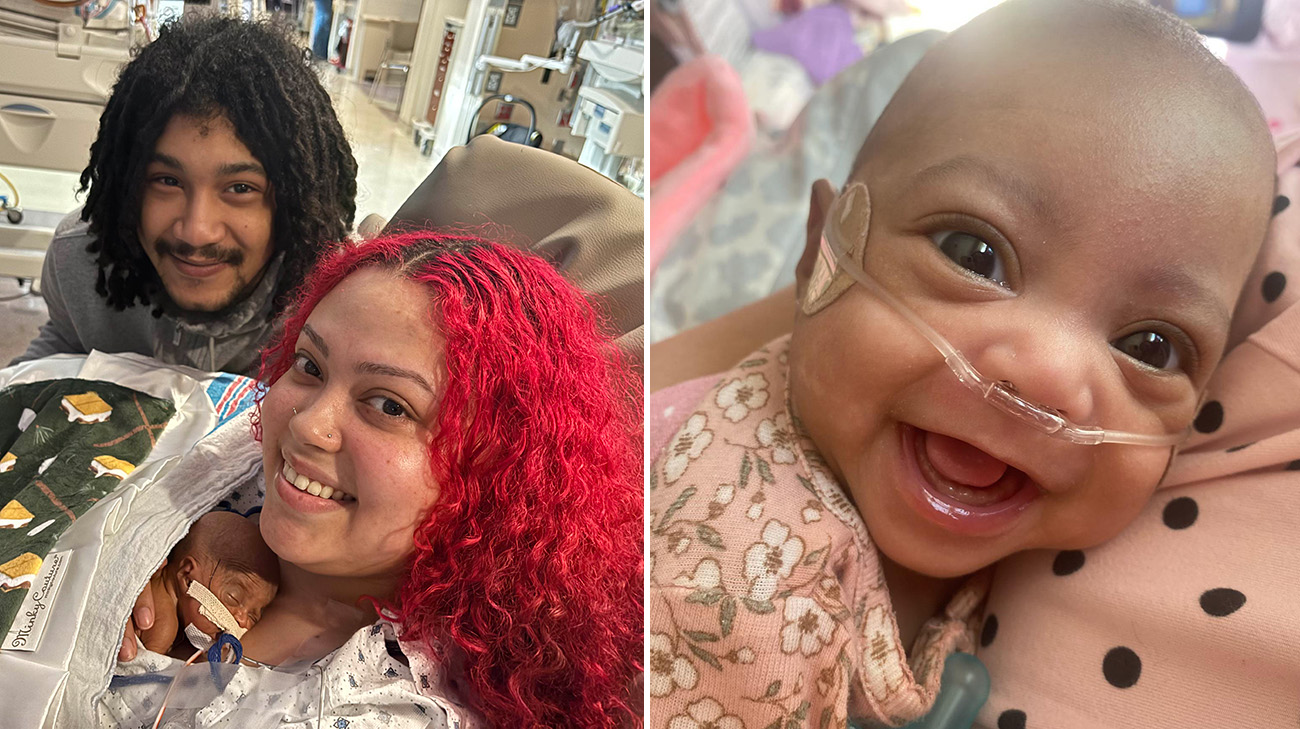
Born at just 24 weeks in February 2025, Essence Pinkney weighed 342 grams, about 12 ounces. She was around the size of a soda can and among the smallest babies ever cared for at Cleveland Clinic.
The blood pressure cuff wrapped around Essence Pinkney’s arm was specially designed for the smallest and most fragile patients. An endotracheal tube delivered steady oxygen to her underdeveloped lungs, supporting each breath.
For weeks, a team of physicians, nurses, respiratory therapists and specialists at Cleveland Clinic Fairview Hospital worked around the clock, improvising and innovating to meet her needs. Each milestone — a stable heartbeat, a successful feeding, a tiny gain in weight — was a sign of progress.
“Like all babies born this early, Essence faced an array of serious complications. Because of her size, even the most basic medical care required the most extraordinary precision,” explains neonatologist Mohsen Farghaly, MD, PhD, who began caring for Essence in Cleveland Clinic Children’s neonatal intensive care unit (NICU), along with a team of neonatologists, moments after she was born by emergency caesarean section.
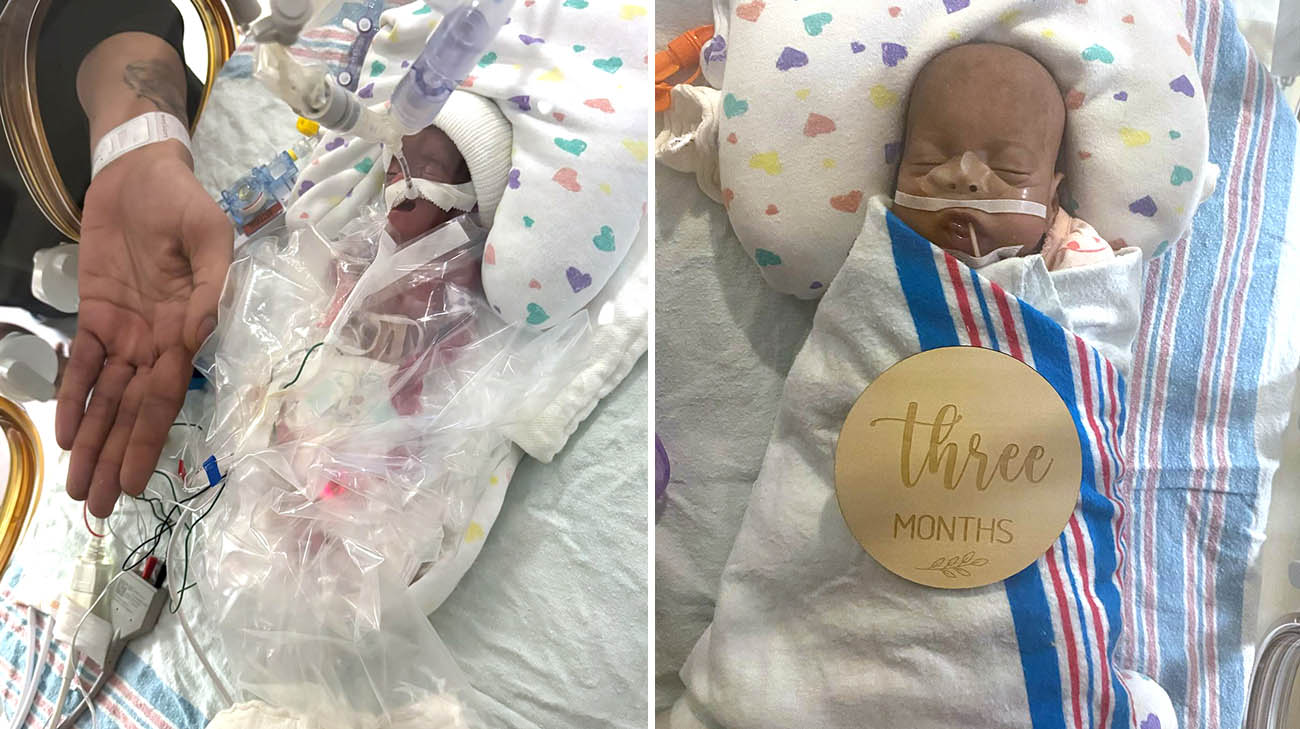
Essence weighed 342 grams, about 12 ounces, at birth. (Courtesy: Miya Vidal)
Essence’s mother, Miya Vidal, still marvels that her baby girl is alive and thriving after such a fragile start. She remembers the first time she saw her —one hour after giving birth —peering through a glass window into a NICU room crowded with machines and caregivers, all working to keep Essence alive.
“She almost didn’t look real,” says Miya, who was 21 when she gave birth to Essence. “I had never seen a baby that small. I didn’t even know a baby could survive being that small. It was shocking and scary. She wasn’t breathing on her own, but she was moving her fingers, kicking her legs, doing things that amazed me for someone so tiny.”
Miya’s pregnancy had been free of complications, and she worked two jobs until she was 20 weeks pregnant. Then, during a routine anatomy scan, the ultrasound technician spotted something unusual and immediately consulted with a physician.
Miya learned her unborn baby had intrauterine growth restriction (IUGR), a condition in which estimated weight falls below the 10th percentile for gestational age. While the news was concerning, the plan at that point was to closely monitor growth as the pregnancy progressed.
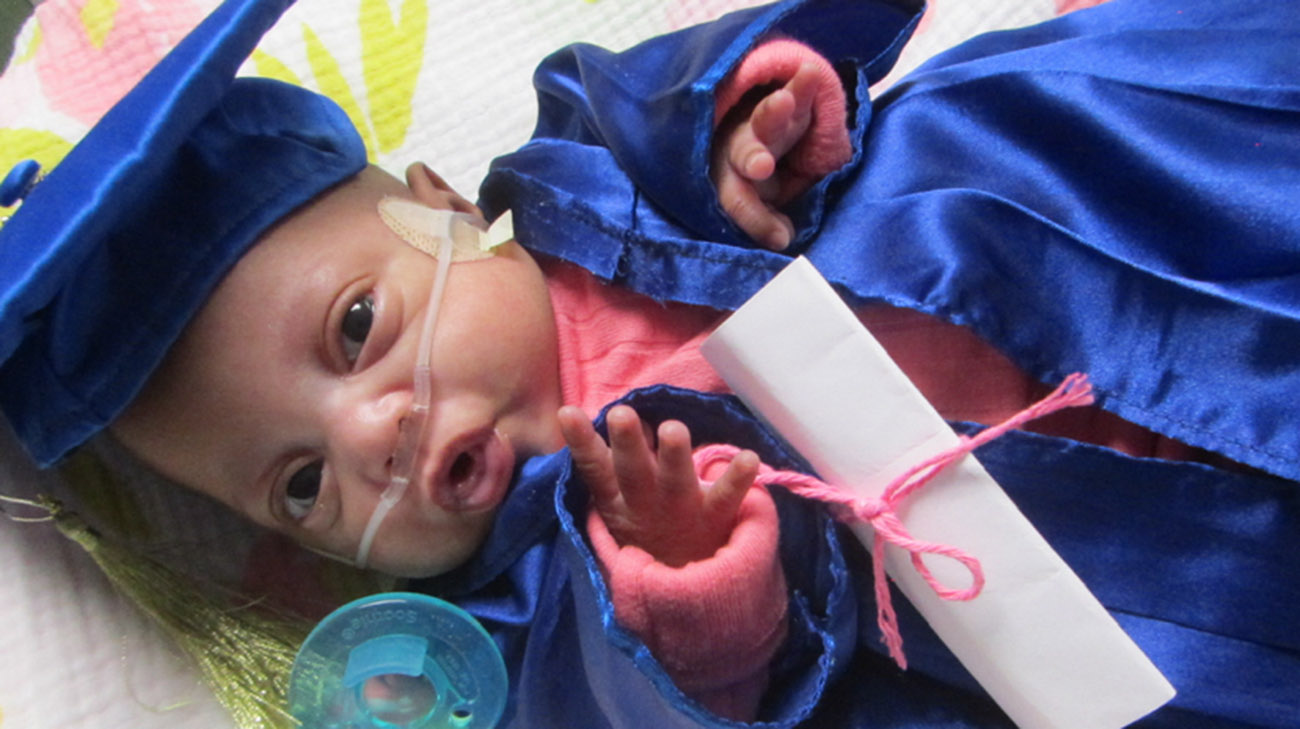
Essence became a NICU graduate after spending 153 days in the NICU at Cleveland Clinic Children's. (Courtesy: Miya Vidal)
When Miya was 24 weeks pregnant, doctors discovered the low weight was caused by a condition called umbilical vein varix, which occurs when the flow of blood and oxygen through the umbilical cord is restricted. Miya was admitted to the hospital to be closely monitored. However, when Miya’s blood pressure began to spike, and she showed signs of preeclampsia, doctors determined an emergency C-section was necessary.
Miya was heartbroken by the news, as she realized Essence had a vastly reduced chance of survival being born so early.
After birth, Essence’s care team rushed her to the NICU, where specialists from multiple disciplines worked tirelessly to address a long list of complications — most stemming from her underdeveloped organs and systems. She faced dangerously low blood pressure, struggled to maintain normal blood sugar levels, and was at high risk for retinopathy of prematurity (ROP), a condition in which abnormal blood vessel growth in the eyes can lead to blindness.
One of the most critical challenges was respiratory failure, compounded by a collapsed lung that required immediate ventilation. Essence also faced patent ductus arteriosus (PDA), a heart condition common in extremely preterm babies that disrupts normal blood flow between the heart and lungs.
“Every day brought new hurdles and uncertain outcomes,” says Dr. Farghaly. “Every procedure we had to do for her required specialized tools that can fit into her fragile veins, arteries, and airways. Her skin was paper thin, and her body was incredibly fragile. Every heartbeat was a triumph, every gram of weight she gained was a victory.”
Day after day, week upon week, Essence remained in the NICU. Her mom and dad, Rufus Pinkney Jr., were almost always by her side.
Using the hospital’s library, Miya and Rufus would borrow children’s books to read to Essence. They would also sing songs and play soothing classical music.
“We knew when she liked a book or song, because her vital signs on the monitors would improve,” Miya recalls. “So, we would just keep reading or singing her favorites, over and over.”
About five weeks after Essence’s birth, Miya and Rufus were finally able to hold her for the first time. Using a technique called kangaroo care, they took turns holding her skin-to-skin, a practice that helps stabilize a baby’s heart rate and temperature while promoting restful sleep.
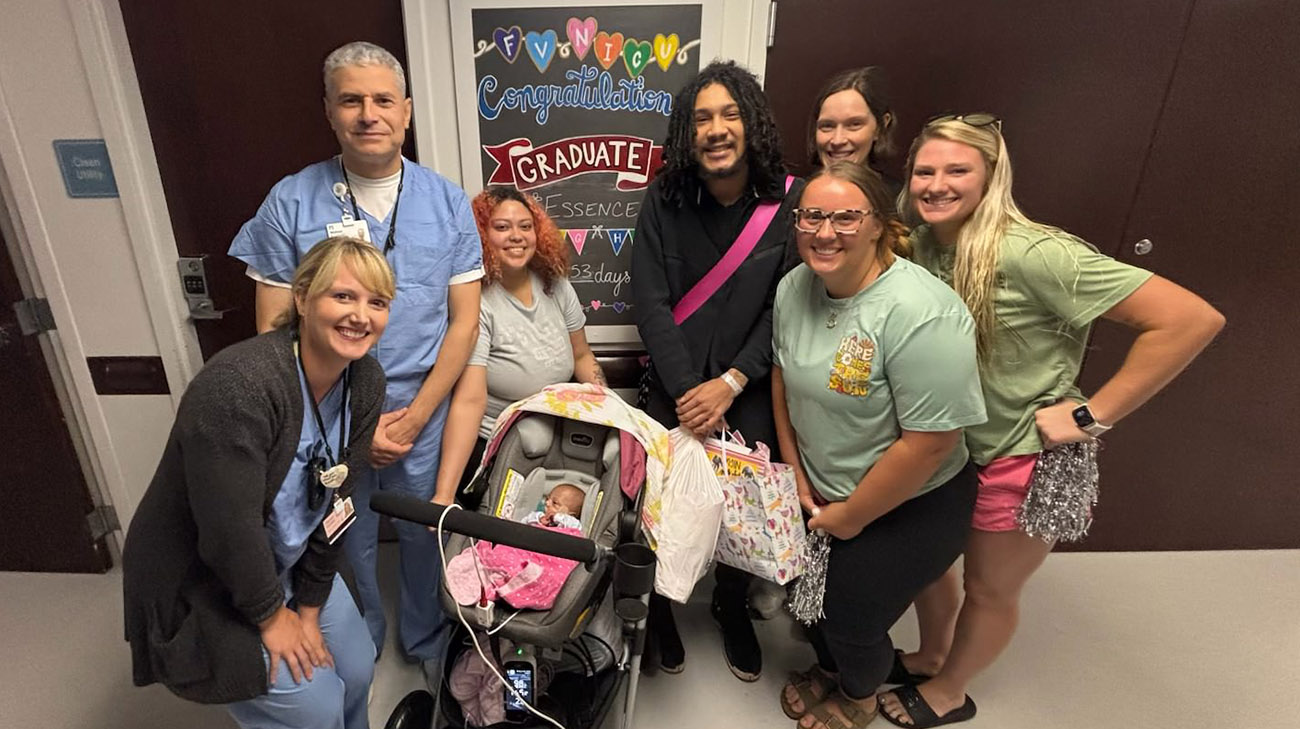
Miya, Rufus and Essence surrounded by members of their care team before being discharged to go home. (Courtesy: Miya Vidal)
Miya still recalls that moment. “She was hooked up to a million cords, and four or five nurses lifted her out of the bed and put her on my chest, with a little blanket covering her. She was so small! And the first thing I felt was her little heart beating and her breathing on my chest. It was so surreal.”
While Miya longed to bring Essence home, she realized their time in the NICU, and the guidance of so many compassionate nurses, was teaching her how to be a mother.
“I would attend parenting and CPR classes, and the nurses were so patient and very considerate with us. It was a lengthy learning experience, but I learned so much,” says Miya.
Finally, 153 days after Essence’s birth, Miya and Rufus carried their daughter, who weighed 4 pounds, 10 ounces, out of the hospital free of tubes and wires, except for a small oxygen supply and a heart monitor. As they walked down the hallway, dozens of doctors and nurses gathered to cheer them on. “Some even came in on their day off,” Miya recalls. It was a moment that felt like a turning point after months of uncertainty.
Dr. Farghaly remembers that day well. “Her story is an example of hope and extraordinary teamwork. It’s not only the medical professionals but also her family who overcame the challenges. Babies like Essence remind us of how far neonatal intensive care has come, and how much courage and resilience these little babies carry.”
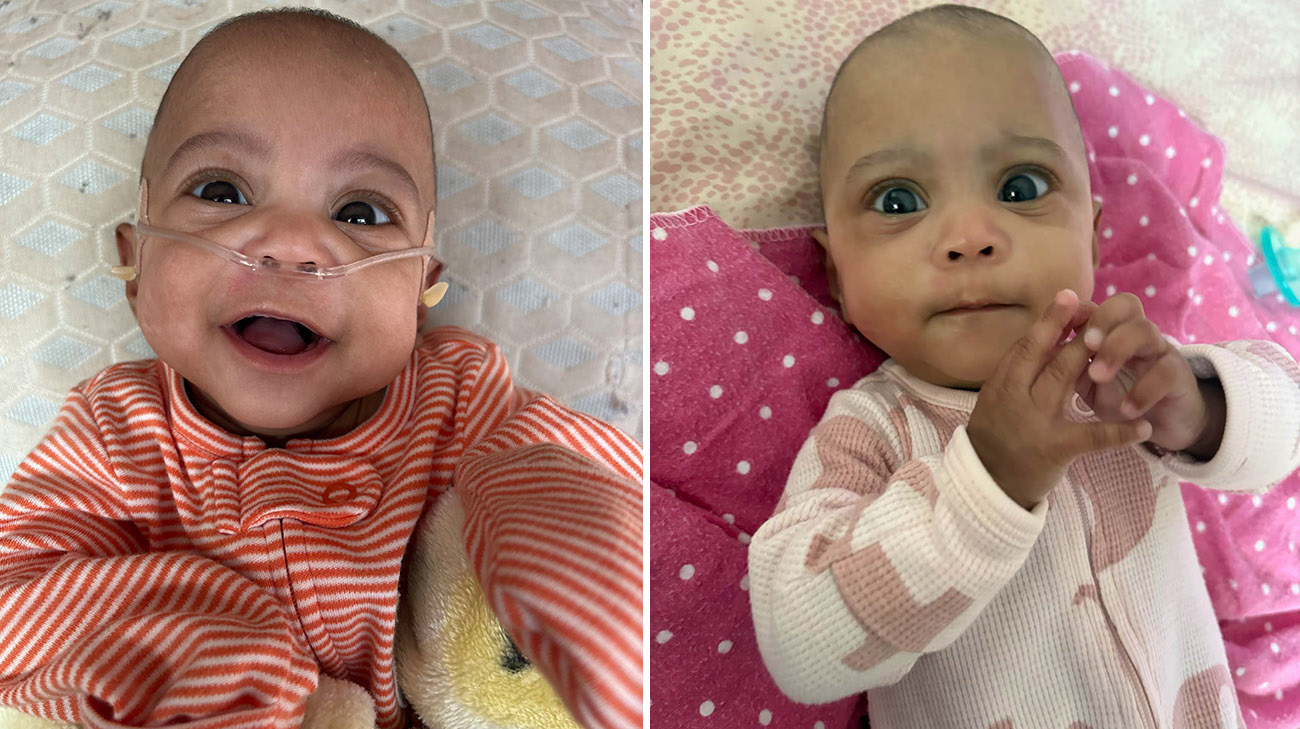
Essence continues growing stronger each day. (Courtesy: Miya Vidal)
Months later, Miya continues caring for Essence at home. Several times a month, she and Rufus return to the hospital for checkups or procedures, most recently, laser treatment to address the ROP eye condition.
Essence also attends the NICU Follow-Up Clinic, in Rocky River, Ohio, where a comprehensive team evaluates her progress, identifies potential developmental delays and connects families with resources to support healthy growth and prevent long-term challenges.
At home, they receive regular visits from Cleveland Clinic’s home care team, which includes nurses and physical, occupational and speech therapists. The speech therapist focuses on helping Essence master eating. With seven or eight fortified formula feedings a day, Essence is steadily gaining weight. She’s also cooing, smiling and showing her personality.
Miya continues to embrace and enjoy the journey of motherhood. “I’m still finding myself as a mother, but I’m a totally different person,” she states. “There’s nothing better than being a mom.”
Related Institutes: Cleveland Clinic Children's

